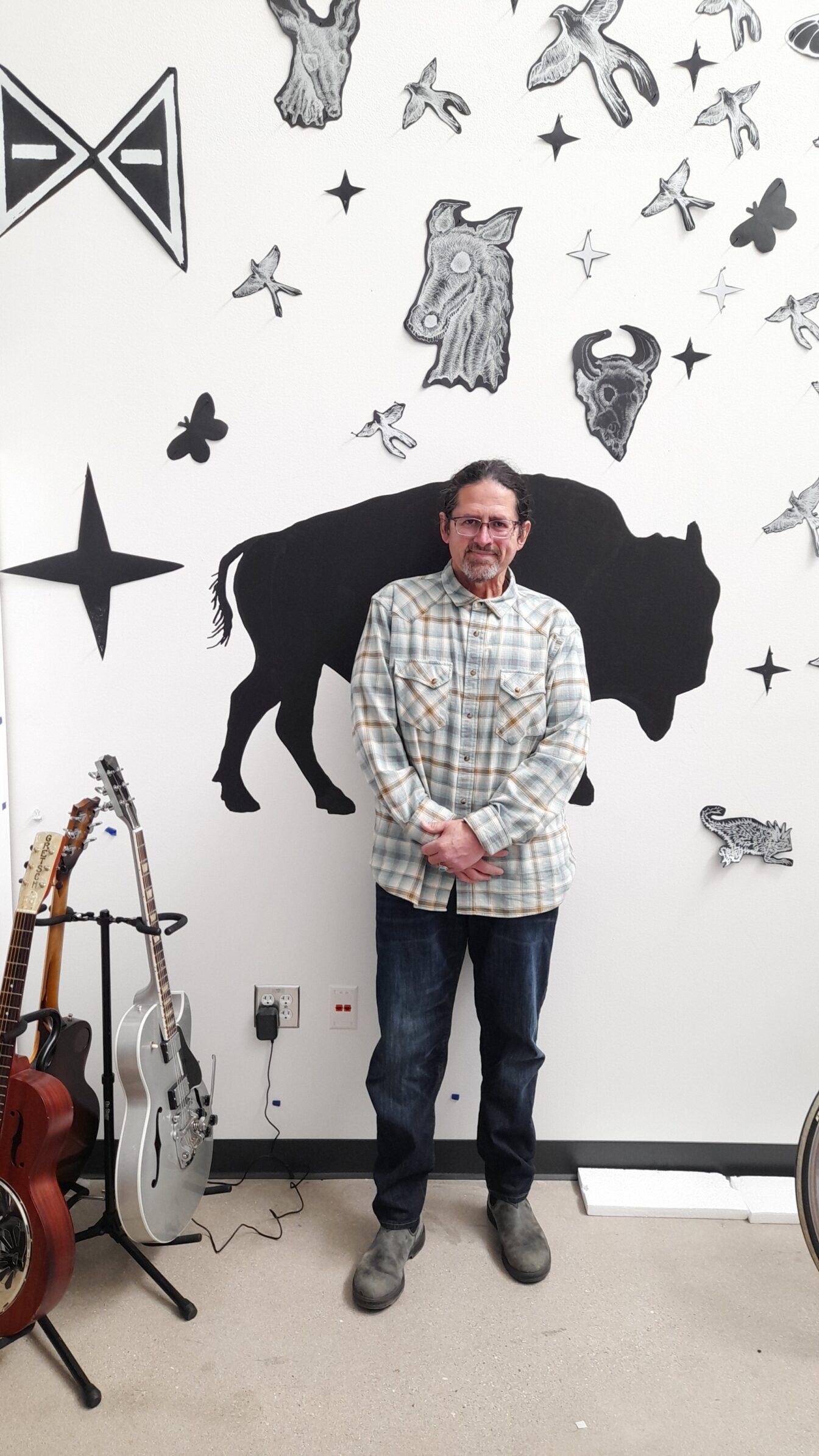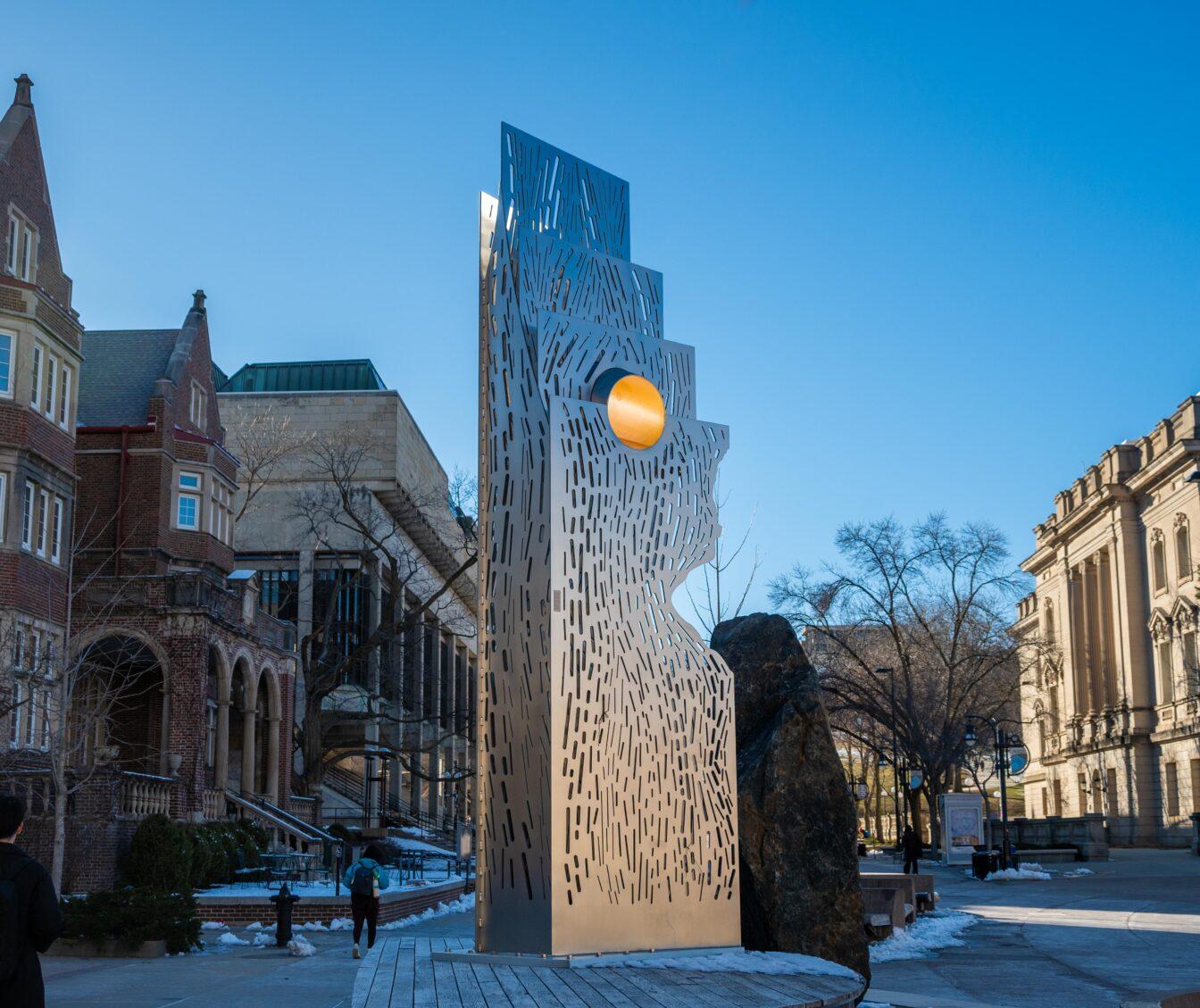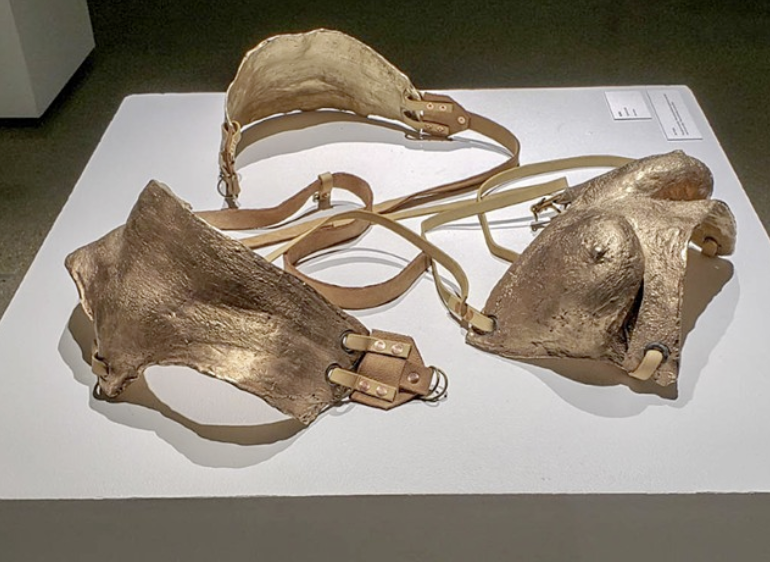When University of Wisconsin Printmaking-Relief and Serigraphy professor and Associate Dean for the Arts John Hitchcock was a child, his grandmother would often tell him stories related to their Indigenous culture.
Hitchcock’s grandmother would teach him to draw and create his own designs by imitating the pattern of her beadwork and taking inspiration from flowers and other natural elements. This inspiration forms the foundation of Hitchcock’s work showing at the National Gallery of Art in Washington, D.C. UW photography professor and co-author of the book “People of the Big Voice” Tom Jones is also featured.
The professors’ work is part of the exhibition “The Land Carries Our Ancestors.” The exhibit was curated by by Jaune Quick-to-See Smith, an Indigenous artist and citizen of the Confederated Salish and Kootenai Nation, according to the National Gallery of Art website. The exhibit is the first showing of native art presented at the National Gallery in 30 years.
Smith is an important figure in the contemporary Indigenous art movement, known for her work representing the Indigenous people’s artwork and spreading awareness of their talents. She has curated exhibitions in the Metropolitan Museum of Art, the Smithsonian American Art Museum, the Denver Airport and other spaces, according to the Accola Griefen Gallery website.
Wisconsin Chamber Orchestra’s ‘Harmony in Black’ elevates Black composers
For “The Land Carries Our Ancestors,” Jaune curated a collection of 50 pieces of Indigenous art in different forms such as printmaking, painting, photography, weaving, beadwork, video, drawing, sculpture and performance showcasing the culture and tradition of the Indigenous people. “The Land Carries Our Ancestors” focuses on Indigenous peoples’ relation to their land, which they are highly conscious of their effect on looking into the future, Hitchcock said.
“The main goal of the exhibition is showing how we honor our ancestors and honor the land, and how we look at the land and look at the future,” Hitchcock said. “How we live on it and what we are doing on our planet.”
Hitchcock’s work featured in the National Gallery exhibit, “Impact vs. Influence,” was inspired by his hometown of Fort Sill, Oklahoma, he said.
Fort Sill is a U.S. military training base known for its involvement in the U.S. war effort during the American Indian Wars, according to the Oklahoma Historical Society. The military base neighbors an area where people of the Indigenous Comanche Nation live, only separated by a highway, Hitchcock said.
As a child, when Hitchcock heard the sounds of bombs and helicopters outside his bedroom, he would draw installations and create vivid war scenes. In 2014, he recreated some of these ideas to encompass his piece now featured in the National Gallery, “Impact vs. Influence,” Hitchcock said. The piece is a collection of animals and machinery Indigenous to the Comanche tribal lands near Fort Sill.
“There is a duality in the work,” Hitchcock said. “Right next to Fort Sill is a wildlife refuge. I am using the beauty of the land versus the reality of Fort Sill as a military complex and the reality of the land I grew up on.”
“Impact vs. Influence” is a massive mural encompassing multiple walls. On these walls, Hitchcock traces these ideas of reality and beauty in his work in four tiers or layers, trying to portray peace and calmness of individual events in a larger chaos.
The first tier is what he calls “the landline,” or the setting of the piece. It is the sky and land symbolizing that every being and object is a part of land and we ourselves are a part of it. The other three tiers signify what is above, below and on that land, Hitchcock said.
Monochrome paintings of helicopters, deer and buffalos constitute the second tier, being a larger size than the others. Smaller figures such as hour glasses representing the past, present and future, a medicine wheel and buffalo skeletons constitute the third tier. The fourth and last tier is a collection of smaller animals and stars filling up the empty space, repressing chaos. Together, all the individual images create a large art piece with which Hitchcock embeds his culture, the culture of the his people and his hometown.
The strong presence of the army does not go unnoticed in the art piece. The helicopters and other military machinery in Hitchcock’s work portray the Comanche tribal land’s closeness with many man-made means of destruction — a stark contrast to the more peaceful images of wildlife and nature.
Each figure in the piece is related to Hitchcock and his childhood. Today, he brings it to life and with it the culture, story and life of his and other Indigenous tribes.
The other featured UW artist, Jones, made a similar effort with his piece. He uses landscape art and specific types of trees to represent the Indigenous people. Jones’ work uses abstract models of objects to portray their significance. He is also an important figure in representing Ho-Chunk veterans and the un-enrollment of members from their tribes, creating work which is both political and personal to him.
“The Land Carries Our Ancestors” opened Sept. 22, 2023 and will remain open until Jan. 15, 2024. Afterward, it will appear at the New Britain Museum of American Art, according to the National Gallery of Art website.



















